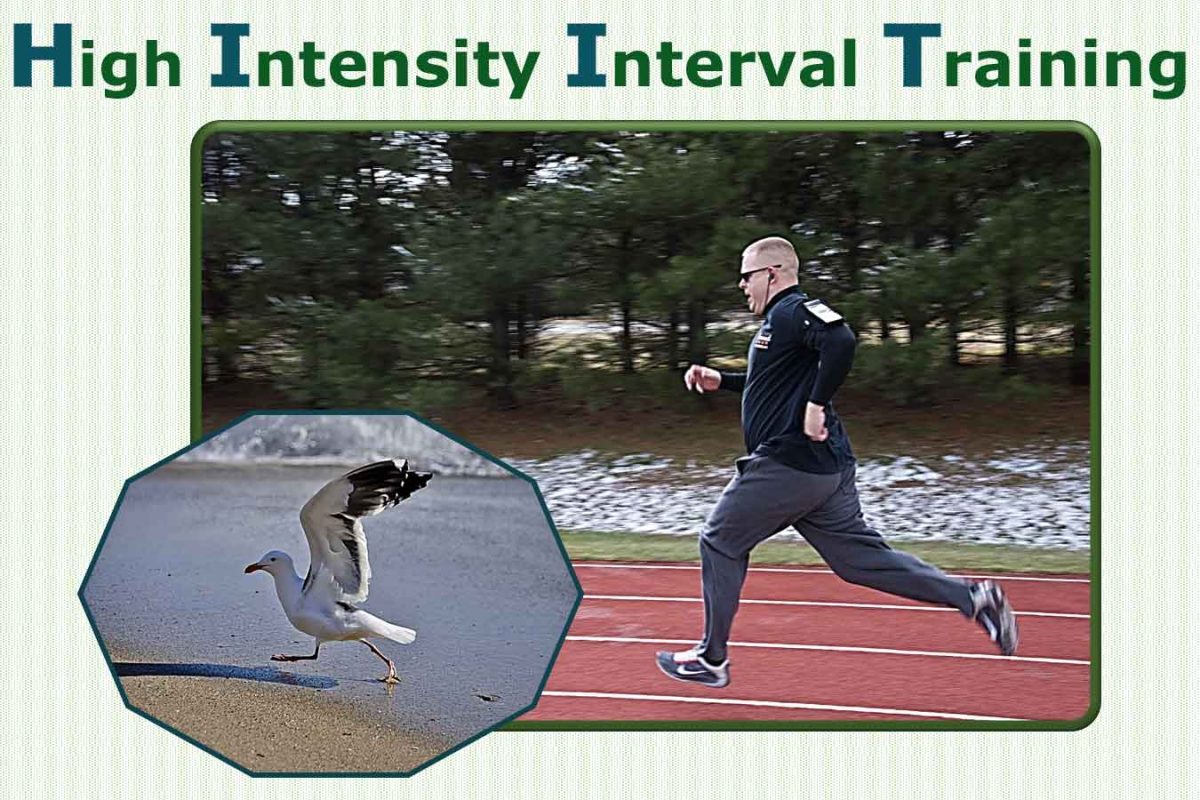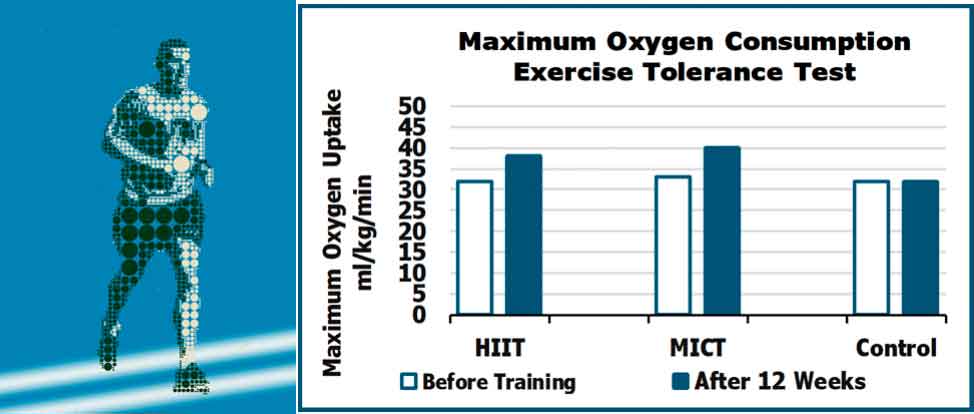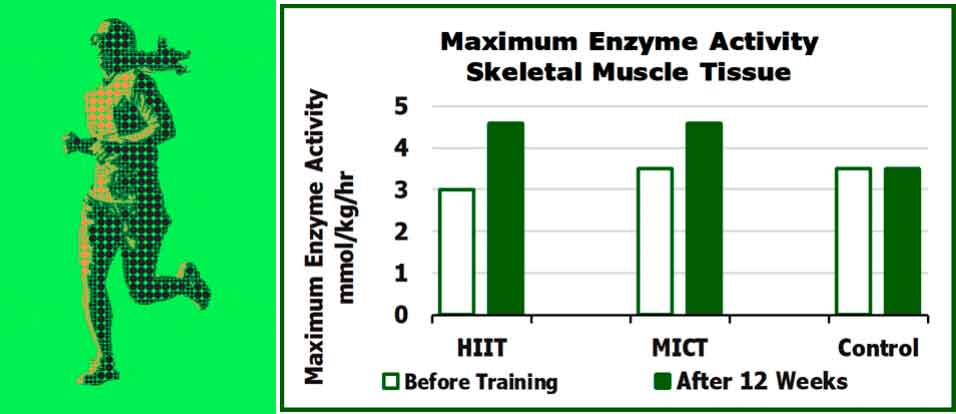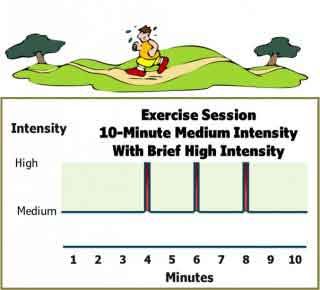Telehealth Reverse Diabetes with Brief Interval Exercise | Free Trial In Texas

Intense Interval Exercise also builds strength as well as endurance. It saves time! Takes half the time to do twice as much work. Try it.
Ever since doing wind sprints in teen age sports, we remember running hard for conditioning.
We’ve learned a lot since then. High intensity effort for brief intervals during aerobic exercise builds muscle. Just like strength training builds muscle.
Let us help you start brief interval exercise training for as little as 10 minutes at a time.
Sign Up
To learn more about programs Herd Healthcare offers, our website is:
www.herdhealthcare.com
High Intensity Interval Training (HIIT)
We’ve known for a long time that exercise improves cardio-muscular health. It improves cardiovascular function while supplying increased amounts of oxygen and nutrients to working skeletal muscle. It also improves strength and metabolic function of skeletal muscle doing physical work.
What we’re still testing is the best routine for training. We’re looking for the best types of exercise and the best routines for intensity, duration and day by day schedule for cardio-muscular conditioning.
Results of many studies direct our attention to short bouts of High-Intensity Interval Training. That is brief intervals of maximal intensity intermixed with continuous moderate intensity of exercise.
Intensities and timing are adjusted so that several high intensity intervals and recovery are intermixed throughout an exercise session.
Cardiometabolic Function With Exercise Training
Guidelines for Routine Exercise Training specify 150 minutes of Moderate-Intensity Continuous Training (MICT) every week. The benefits include:
• cardiorespiratory fitness (maximum oxygen uptake),
• skeletal muscle metabolism (mitochondrial enzyme activity), and
• insulin sensitivity (oral glucose tolerance).
Brief High Intensity Interval Training takes much less time for the same benefits. Investigators in Canada compared results of exercise training in 27 men who were mildly overweight. They reported that an HIIT protocol required only 20% of the time required by MICT for the same results.
All the subjects were physically inactive before they entered the study. They were divided into 3 groups and tested for cardiorespiratory fitness, skeletal muscle metabolism and insulin sensitivity before and after a 12-week program.
One group had MICT of 50-minutes moderate exercise in 3 sessions each week. A second group had HIIT including 3 intervals of 20 seconds at maximal effort separated by 2 minutes of low intensity exercise up to 10 minutes exercise in 3 sessions each week. The third group was physically inactive during all 12 weeks.

As shown in the Figures, maximum oxygen uptake and skeletal muscle enzyme activity increased the same amounts in both exercise groups. There were no changes in the control group. Maximum oxygen uptake during Exercise Tolerance Testing increased about 20% in both exercise groups. Mitochondrial enzyme activity measured in excised skeletal muscle also increased about 20% in both exercise groups.

Insulin sensitivity measured during oral glucose tolerance testing increased by 34% in the MICT group and 53% in the HIIT group.
These results showed similar cardiometabolic improvement during 12 weeks of exercise training. However, the HIIT protocol required only 10 minutes in each of 3 sessions compared to 50 minutes of exercise in each session of MICT.
Effectiveness And Safety In Type 2 Diabetes
Exercise training in patients with type 2 diabetes improves cardiometabolic function. Every session of moderate intensity for 30 minutes increases insulin sensitivity for up to 48 hours. However, we still don’t know the most effective and safe protocol for preventing and reversing type 2 diabetes.
HIIT has been reported to be to be time efficient as well as safe and effective for patients with type 2 diabetes. Improved insulin sensitivity has been reported with as little as 1 minute of vigorous exercise in a 10-minute training session done 3 times each week.
Initial cardiorespiratory fitness and experience in exercise training govern progression in HIIT. In the beginning, just picking up the pace for a few seconds in a moderate intensity routine is a good way to start. With experience, gradually increasing the intensity, duration and number of repetitions can produce remarkable results!
Medical clearance is essential for increasing exercise to more than walking.
Getting Started
The basic routine starts with continuous aerobic exercise. Examples of aerobic exercise are walking, running, cycling or swimming. Any type and pattern of exercise that can be sustained for many minutes or even hours without stopping. Initially, the objective is to establish a daily routine of aerobic exercise at an intensity that can be maintained for at least a few minutes.
In the beginning, a useful plan is to move at whatever intensity allows exercise for 10 minutes. Even stopping and starting several times up to 10 minutes in all. After several days of repeated exercise, strength and tolerance increases. With each daily session, intensity can be increased gradually.
 As muscles become stronger and contract more strenuously, circulation and respiration increase. Soon, breathing more deeply and more frequently requires more effort. At moderate intensity, it’s still possible to talk in short sentences and while moving continuously for at least 10 minutes.
As muscles become stronger and contract more strenuously, circulation and respiration increase. Soon, breathing more deeply and more frequently requires more effort. At moderate intensity, it’s still possible to talk in short sentences and while moving continuously for at least 10 minutes.
After several minutes of moderate continuous exercise, brief bouts of maximal exercise are interjected for a few seconds or several minutes, to the limits of tolerance. Returning to moderate intensity allows recovery for several minutes before the next high intensity interval.
An example of a short workout with high intensity intervals takes 10 minutes. It starts with moderate intensity effort, still able to talk in short sentences.
After 3 minutes at moderate intensity, speed and effort of muscular work is increased so that breathing hard prevents talking at all. After about 20 seconds at maximal exercise, speed and effort are decreased back down to moderate intensity with breathing once again allowing talk in short sentences.
speed and effort are decreased back down to moderate intensity with breathing once again allowing talk in short sentences.
After about 2 minutes of recovery at moderate intensity, another 20 seconds of maximal effort is repeated. Followed by another 2-minute period of recovery exercising at moderate intensity.
The third and final 20 second interval of high intensity effort is added. Followed by a final 2-minute recovery at the original speed and effort.
All this takes about 10 minutes. That’s a High Intensity Interval Training session.
Intermediate and Advanced Routines are merely progressions of Intensity and Duration of the High Intensity Intervals.
Summary
Medical clearance is essential for increasing exercise to more than walking.
Routine exercise improves cardio-muscular health. Aerobic endurance exercise increases cardiovascular capacity to supply oxygen and nutrients to skeletal muscle during exercise. It also increases insulin sensitivity by increasing muscle capacity to store sugar and fat while resting.
Resistance strength training not only increases skeletal muscle power, it also increases muscle mass.
Mixing moderate intensity and brief intervals at high intensity improves cardiovascular function, insulin sensitivity and muscular strength.
 We are pleased to share our blog articles with you, and we are always interested to hear from our readers. Our website address is: www.herdhealthcare.com
We are pleased to share our blog articles with you, and we are always interested to hear from our readers. Our website address is: www.herdhealthcare.com




